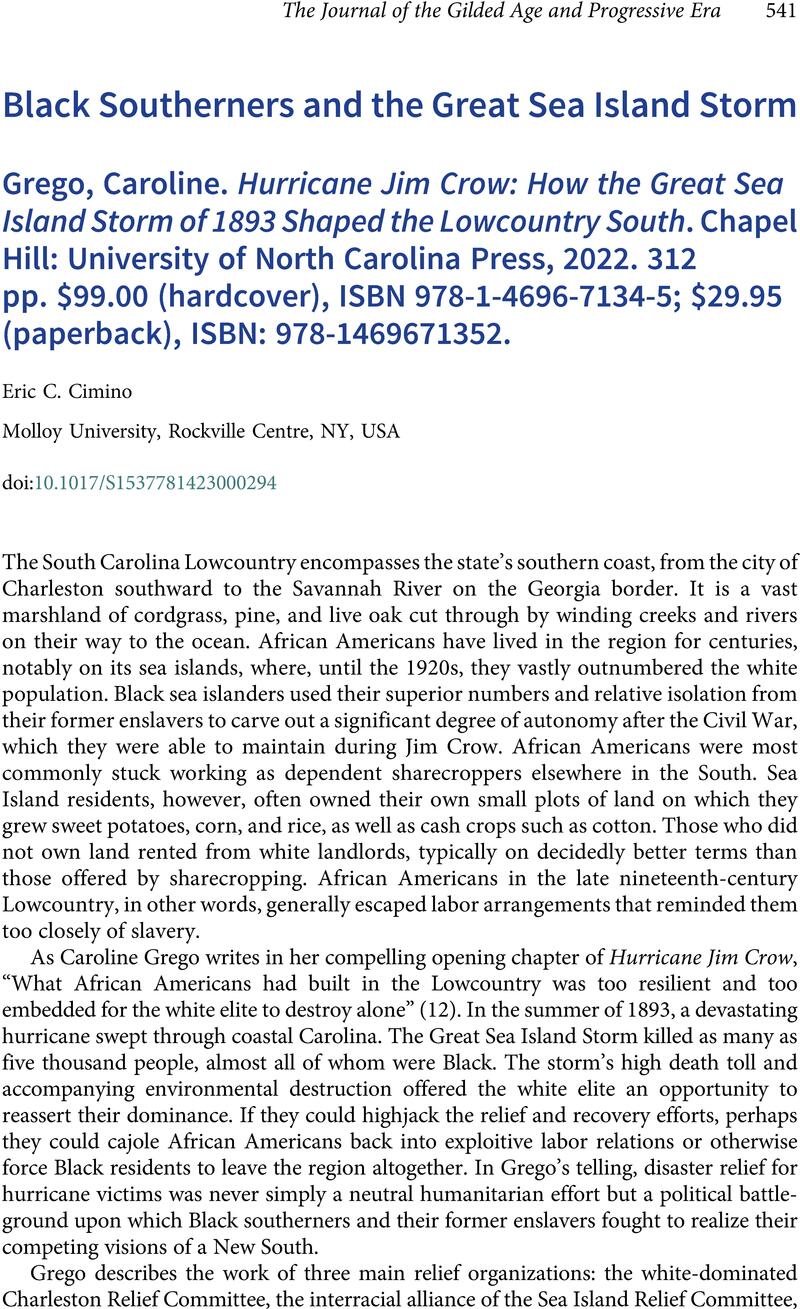No CrossRef data available.
Article contents
Black Southerners and the Great Sea Island Storm - Caroline Grego. Hurricane Jim Crow: How the Great Sea Island Storm of 1893 Shaped the Lowcountry South. Chapel Hill: University of North Carolina Press, 2022. 312 pp. $99.00 (hardcover), ISBN 978-1-4696-7134-5; $29.95 (paperback), ISBN: 978-1469671352.
Review products
Caroline Grego. Hurricane Jim Crow: How the Great Sea Island Storm of 1893 Shaped the Lowcountry South. Chapel Hill: University of North Carolina Press, 2022. 312 pp. $99.00 (hardcover), ISBN 978-1-4696-7134-5; $29.95 (paperback), ISBN: 978-1469671352.
Published online by Cambridge University Press: 15 December 2023
Abstract
An abstract is not available for this content so a preview has been provided. Please use the Get access link above for information on how to access this content.

- Type
- Book Reviews
- Information
- Copyright
- © The Author(s), 2023. Published by Cambridge University Press


